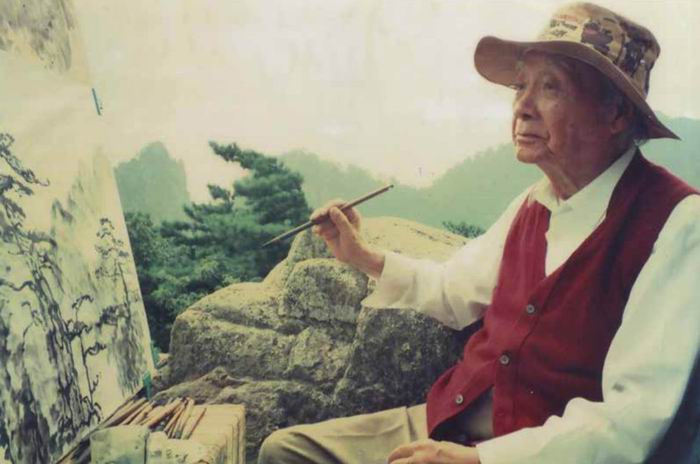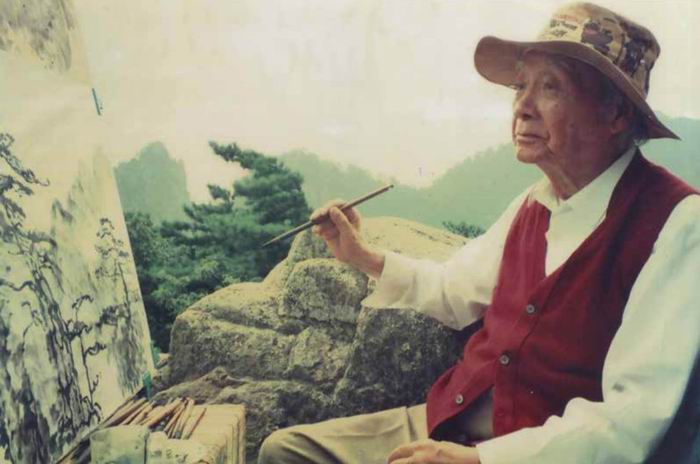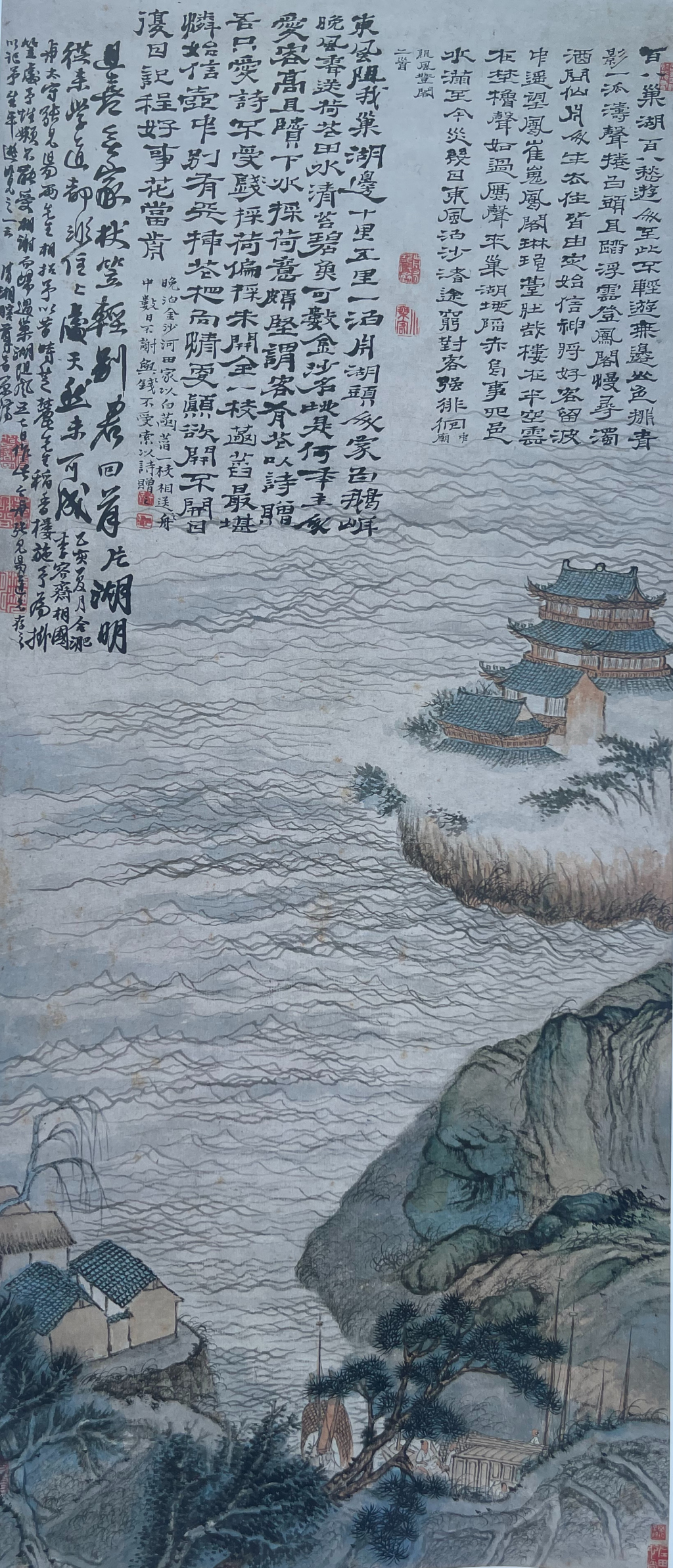
As a master of painting in the late Ming and early Qing Dynasties and one of the "Four Monks of the Early Qing Dynasty", Shi Tao (1642-1707) had a huge influence on the history of Chinese calligraphy, painting and aesthetics. Qi Baishi once said, "Who dares to weep ghosts and gods when he writes for more than two thousand years?" Just a monk." Shi Tao lived in Yangzhou in his later years, and most of his important calligraphy and painting works in his mature period were created in Yangzhou. He also left behind some garden stone structures in Yangzhou - such as the stone mountain house in He Garden.
The "Shi Tao and Yangzhou" academic seminar that has been prepared for many years came to an end in Heyuan, Yangzhou on June 6, 2024. Experts and scholars from Peking University, Tsinghua University, Tongji University, Beijing Academy of Fine Arts and other research institutions participated in the seminar and conducted in-depth discussions. Shi Tao's painting, calligraphy, stone stacking and other creative practices in Yangzhou have had a huge impact on the history of Chinese culture and art. In response to some scholars' doubts about Shi Tao's gardening many years ago, relevant researchers participating in this seminar believed that Shi Tao not only left stone mountain houses during his stay in Yangzhou, but also worked on An's garden. , Wanshiyuan and other garden rockery creations. Participants also conducted in-depth discussions on Shi Tao's friendship and calligraphy and painting creation during his stay in Yangzhou.
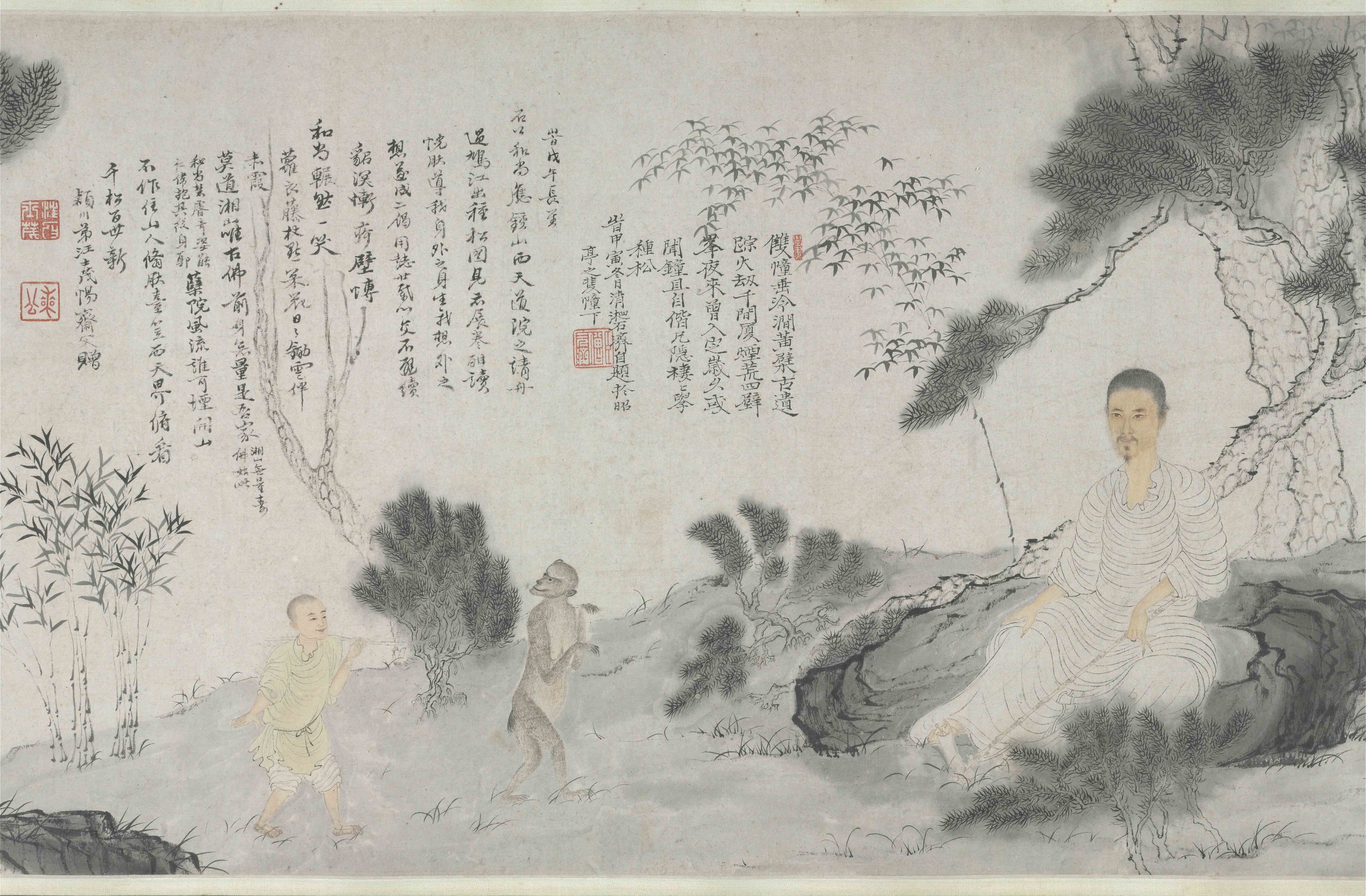
Shi Tao's "Self-written Picture of Planting Pine Trees" Collection of the National Palace Museum, Taipei

Heyuan, Yangzhou, a stone mountain house in the rain
The "Shi Tao and Yangzhou" academic seminar was hosted by the Aesthetics and Aesthetic Education Research Center of Peking University, Yangzhou Shugang-Slender West Lake Scenic Area Management Committee, and co-organized by Yangzhou Heyuan Management Office and Yangzhou Landscape Architecture Society. The "Shitao and Yangzhou" academic seminar was divided into four parts: opening ceremony, keynote report, special forum, and closing summary.
As a master of stone stacking, Shi Tao is undeniable
In his creation and theory, Shi Tao proposed "searching for all the strange peaks to make drafts", "one theory of painting" and "pen and ink should follow the times", etc., which had a huge influence. His famous work of stacked stones, "Pan Stone Mountain House", remains in Heyuan, Yangzhou today, and has exerted a great influence on future generations. Stacked stone mountain building has had a profound impact.
Many years ago, Heyuan, Yangzhou, set up a memorial hall for Shi Tao beside the stone mountain house to show the relationship between Shitao and Yangzhou. Not long ago, a sculpture of Shitao created by the sculptor Wu Weishan was also placed in the Shitao Memorial Hall in Heyuan.
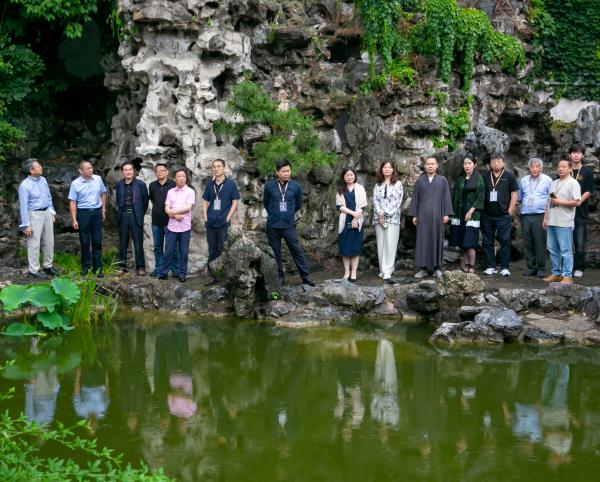
Participants of the "Shitao and Yangzhou" academic seminar inspected Pianshi Shanfang
The opening ceremony of the "Shitao and Yangzhou" academic seminar was hosted by Wang Qinghai, member of the Party Working Committee and deputy director of the Yangzhou Shugang Slender West Lake Scenic Area Management Committee. Xu Liang, secretary of the Party branch and director of the Yangzhou Heyuan Management Office, introduced the academic seminar In related situations, Zhu Liangzhi, director of the Aesthetics and Aesthetic Education Research Center of Peking University, and Liu Weiguo, director of the Shubang-Slender West Lake Scenic Area Management Committee, delivered speeches.
"Yangzhou, as an important stage in Shi Tao's artistic career, provides him with rich creative materials and sources of inspiration. This seminar will deeply explore the essence of Shi Tao's art and inject new vitality into the inheritance and development of Yangzhou's traditional culture." Liu Weiguo said , Shi Tao's artistic achievements are not only reflected in his unique painting style and ingenious stacked stone works, but also in his inheritance of traditional culture and pursuit of artistic innovation. His artistic achievements and influence not only add a strong influence to Yangzhou The cultural heritage has left a profound mark in the history of Chinese art.

Yangzhou Heyuan, the opening scene of the "Shi Tao and Yangzhou" academic seminar
The keynote report delivered by Zhu Liangzhi, director, professor and doctoral supervisor of the Center for Aesthetics and Aesthetic Education Research at Peking University, was "Shi Tao as a Master of Stone Stacking". Zhu Liangzhi has been studying Shi Tao for more than 20 years. In these years, he has published "Study on Shi Tao", "Study on Bada Shanren", "Authentication of Shi Tao's Works handed down from Generations", and compiled and annotated "Collection of Shi Tao's Poems and Essays", etc.
Regarding Shi Tao's stacking of stones, Li Dou of the Qing Dynasty once recorded in "Records of Yangzhou Painted Boats": " Shi Yuanji, courtesy name Shi Tao, nicknamed Dadizi... worked on landscapes and flowers, swaying freely, and clouds bursting out. He also worked on stacking stones. Yangzhou is famous for its famous gardens, and its famous gardens are famous for their stacked stones. Yu's Wanshi Garden was created by Yuan Jishou, and it is still known as a scenic spot. "
Mr. Chen Congzhou, a generation of garden scholar, published "Yangzhou Stone Mountain House - Shi Tao's Works on Mountains" in 1962, pointing out: "(Shi Tao) is also very proficient in gardening on mountains, "Yangzhou Painted Boat Record" and "Yangzhou Prefecture Chronicle" and "Lv Yuan Cong Hua" and other books mentioned that he also worked on stone stacking, and when he lived in Yangzhou, he also left a number of rockery works." After this article was published, it had a great influence and became a major figure in the gardening academic community. Mainstream voice. In the field of Shi Tao research, Zhu Liangzhi, Han Linde, and Chen Guoping all agreed with the theory of Shi Tao overlapping mountains. Among them, Mr. Zhu Liangzhi studied more deeply. Chapter 20 of his book "Research on Shi Tao", "A Series of Examinations of Shi Tao's Friendships with Huizhou Merchants", specially designed The section "Speculation on Shi Tao's possible involvement in the design of Zhenzhou Gardens" proposes that Zheng Zhaoxin's Baisha Cuizhujiang Village and the garden rockery where Xianzhu lived may have been designed and constructed by Shi Tao. In August 2007, Cao Xun, a professor at Beijing University of Civil Engineering and Architecture, published an article in "Architect" magazine, "Shitao Mountain "Original in the World", a Simple and Rough Garden Fairy Tale", denying "Yangzhou Painted Boat Record" and "Lv Yuan Conghua" Related remarks about Shi Tao's stacking of stones put forward in "Jiaqing Yangzhou Prefecture Chronicles" and other books.

Zhu Liangzhi spoke at the opening ceremony of the "Shi Tao and Yangzhou" academic seminar
In his speech, Zhu Liangzhi combined the calligraphy, painting, poetry and other documents handed down by Shi Tao and Shi Tao's friends to say that there is no doubt that Shi Tao stacked stones and built gardens in Yangzhou. Among them, the most important stone stacking work left behind is the Fragrant Stone Mountain House in He Garden. . He said: Shi Tao's friends talked about his gardening and left a lot of documents. The two sentences of Bada Shanren's inscription "Why are the people in Huangzhai Jie Pei and the turning stones" involve Shi Tao's stacking of stones. Turning stones means building stones; For example, "Shi Tao set up a large green stone in Guangling", and "setting up stones" means stacking stones. Shi Tao's friend Du Cheng wrote a long postscript on his painting "Bitter Melon Scene", which includes "The stones are rolled like mountains, and the Yamen Xu "Shen Hao Jingguan", this inscription and postscript provide an important information for this. ... Shi Tao's "rolling stones" - the gardening skills of stacking stones and arranging water, once shocked the government officials. They thought it could rival the momentum of Jing Hao and Guan Tong's landscape.
"Shi Tao was a famous stone stacker during the Kangxi period. This fact is undeniable." Zhu Liangzhi said.

Part of the stone mountain house
Xu Liang, Secretary and Director of the Party Branch of the Yangzhou Heyuan Management Office, gave a speech titled ""Fairy Tales and Historical Facts" - An Examination of Shitao's Yangzhou Gardens on Mountains." He believed through various researches that not only the stone mountain house proposed by Mr. Cao Xun was the monk Mushan The conclusion that the work is not Shi Tao's is not accurate. During his stay in Yangzhou, Shi Tao also engaged in the creation of garden rockeries such as An's Garden, Baisha Cuizhujiang Village, and Wanshi Garden. Shi Tao's mountain stacking is by no means "a Jie Qian" as Mr. Cao Xun thought. "A rough garden fairy tale" is a solid historical fact supported by a large number of historical materials and poems. It is precisely because of the extensive practice of stacking mountains in gardens that Shi Tao became the backbone of Yangzhou gardens in the middle of the Kangxi period of the Qing Dynasty and even the entire Jiangnan gardens. The surviving works of He Yuan's stone mountain house and Geyuan's rockery have unique historical, aesthetic and technical values, and have become irreplaceable specimens and outstanding examples in the history of Chinese classical gardens.

"Shi Tao and Yangzhou" academic seminar site
In his speech "From Hengfeng to "Hengzhou" - Shi Tao's "One Painting" Method in a Three-Dimensional Context", Zhu Yuhui, associate professor and Ph.D. at the School of Architecture and Urban Planning of Tongji University, believed that Shi Tao finally chose to settle in Yangzhou and that he was alone. His artistic purpose and transcendent artistic practice, especially his richly connotative theory of "one painting", are not only engraved on the development trajectory of the landscape painting world, but may also have a profound impact on the city's mountain-building and even gardening intentions. It even resonates with the core of artistic trends such as Western Expressionism two hundred years later - the latter emphasizes the direct expression of personal emotions and spiritual experience. In Shi Tao's art works, we can also see a kind of full control of nature with personal emotions. Scenery, integrated and focused artistic expression.
Li Jinyu, deputy director of the editorial department and professor of "Journal of Yangzhou Vocational University", said in his speech "An Analysis of the Stone Wall of Baisha Cuizhujiang Village" that the Yizheng Baisha Cuizhujiang Village Shibi in the Qing Dynasty had different opinions on who built the stone walls. Some think it was Zhang Nanyuan, some think it was done first, and some think it was Shi Tao. He sorted out the poems involving mountains in the "Thirteen Scenes" of Baisha Cuizhujiang Village by poets at that time, Li Dou's attention to the historical facts of gardens, Zhang Nanyuan's experience of traveling to various places to build gardens, etc., and concluded that the stone barriers in Jiangcun were built in the late Ming Dynasty. Zhang Nanyuan in the early Qing Dynasty.

"Shi Tao and Yangzhou" academic seminar site
The great significance of Yangzhou and the canal to Shi Tao
Scholar and artist Liu Mo's speech was "Shi Tao and Yangzhou". He believed that Yangzhou, where Shi Tao lived in his later years, was the distribution center for official and civilian salt in the six provinces of Jiangsu, Anhui, Jiangxi, Hunan, Hubei and Henan. Businessmen from all provinces gathered in Yangzhou. Yangzhou's business is increasingly prosperous, and it has recovered from the war. Shi Tao's works created in his later years can often be found in places such as "Big Tree Hall", "Under the Big Tree", and "Under the River". The paintings and calligraphy created by Shi Tao in recent years are often signed with Qinglian Cottage, Gengxin Cottage, Daizhan Cottage, etc.
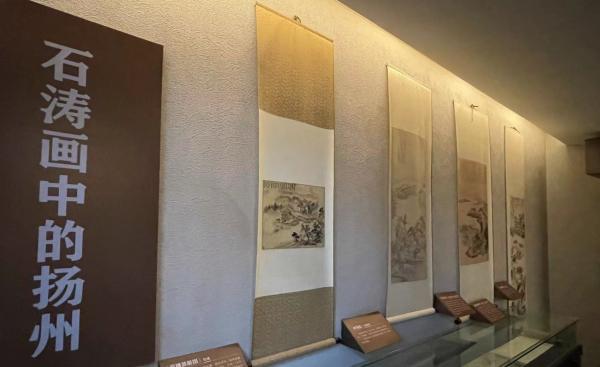
Exhibition scene of Shi Tao Memorial Hall in Heyuan, Yangzhou

Map of Yangzhou Prefecture during the Kangxi period of the Qing Dynasty
Liu Lianjie, professor and doctoral supervisor of Yunnan Normal University, said in his speech "God "Encounters" Mountains and Rivers: Shi Tao's Pursuit of "True Landscapes"" that Shi Tao's painting theory has attracted much attention from the academic community. When talking about the relationship between painters and mountains and rivers, He put forward the theory of "transformation into traces when encountering gods". Shi Tao's "True Landscape" inherited Tao Yuanming's "Nanshan" tradition. Shi Tao realized the mountains and rivers with the "One Painting Theory" and finally got the meaning of Nanshan. This "Nanshan" is not the shape of mountains and rivers, but a trace of the transformation and development of heaven and earth. The painter also serves as a trace of the transformation and development of heaven and earth, so he can "encounter gods". This is Shi Tao's painting method.

Shi Tao. Jinling Nostalgia Book 12 pages 4, Freer Museum of Art
Lu Xiao, director and researcher of the Theory Department of the Beijing Academy of Fine Arts, gave a speech on "Research on the "Jinling Reminiscences" created by Shi Tao during the Yangzhou Period. She believed that Shi Tao, a painting monk who once lived in Jinling, also painted a series of works commemorating Jinling in Yangzhou in his later years. , conveying strong feelings of survivors. Such as "Qingliang Terrace Picture" (Collected by Nanjing Museum), "Ten Scenes of Jinling" (Collected by the Palace Museum), "Qinhuai Reminiscing Pictures" (Cleveland Museum of Art Collection) and "Jinling Nostalgia Pictures" (Flier Sackler Art Collection), etc. In addition, several pages of the "Eight Victories in the South of the Yangtze River" collected by the British Museum also depict the scenic spots of Jinling.

A part of the Dadi Thatched Cottage in Shi Tao's landscape fan "Mountain Dwelling and Autumn Viewing" (collected by the Shanghai Museum). The postscript of this painting reads: "Yu Ruoweng visited the Dadi Cottage from Qinhuai... I wrote a few strokes, and there seemed to be an old man in front of the court. Sad autumn feeling in my heart."

The current site of Shitao Dadi Thatched Cottage, beside the Dadongmen Bridge in Yangzhou
Gu Cunyan, art editor of "The Paper" and part-time painter of the Shanghai Painting and Calligraphy Academy, spoke on "The Canal Water in Shi Tao's Paintings - Starting from "Huaiyang Clean Autumn Picture"". He believes that "Huaiyang Clean Autumn Picture" depicts the autumn scenery of the canal after the flood in Huaiyang. Although there are city walls, it may be based on the water surface in Liaojiagou or Zhuyu Bay. What comes across is a sense of loneliness in the vastness of the world. The feeling is connected with Wang Yang's state of life, and is integrated into the profound thinking of social history and life in the world. It is connected with Shi Tao's favorite Dongpo and "Red Cliff Fu". "Shi Tao went north to the capital, and then back to Yangzhou through the canal. There is a saying in Shi Tao's mountain painting that he "searched for all the strange peaks to make a draft", but he was also good at painting water. After returning to Yangzhou from Beijing frustrated, he built a large thatched cottage and the sight of water, which was a turning point in his life and artistic creation. Yes, the canal is to Shi Tao what Huangzhou is to Dongpo. After experiencing the twists and turns of life, he re-experienced life on the boat and truly returned to his heart. He used his own methods, thus opening up a new era of freehand brushwork for Chinese literati. peak."

Part of Shi Tao's "Huaiyang Clean Autumn Picture"

Volume 12 of Shi Tao's Twelve Returns, Collection of the Metropolitan Museum of Art, New York
Tan Shengguang, a researcher at the Tsinghua University Museum, gave a speech on "Shi Tao's Early Deeds and Paintings". He believed that Shi Tao's early painting style inheritance was not very clear. Through double inspection and research of existing reliable paintings and historical materials, he tried to clarify his early years in During the periods of Wuchang, Songjiang and Xuancheng, that is, before moving to Changgan Temple in Nanjing in August 1680, his movements and changes in calligraphy and painting styles were recorded. Shi Tao called him "the one among the teachers and friends in their writings." The members of the Xuancheng Poetry and Painting Society once played the role of both teachers and friends. In particular, Shi Tao and Mei Qing had a close relationship, and their painting styles influenced each other. Shi Tao While singing and singing, it influenced his later style of "poetry and painting all the way".
Ren Junwei, a researcher at the Institute of Theory of the National Academy of Painting, gave a speech on "The Friendship between Shi Tao and Cha Shibiao": The Palace Museum has a collection of Shi Tao's work "Cha Shibiao's Unfinished Landscape Axis". The style of this work can be clearly felt by Cha Shibiao. The painting was influenced by Ni Zan's style. The mountains painted by Shi Tao in the upper part are also trying to be close to the style of Ni Zan's paintings that Cha Shibiao learned from. The cooperation between Zha and Shi is an unusual phenomenon. Why is this painting "unfinished"? Who "belongs" to Shi Tao to complete the repainting? All have been fully developed in the research.

Seminar site
Wu Qian, a lecturer and Ph.D. at the School of Arts of Jinan University, believes in "An Examination of Shi Tao's Official Script and Related Issues" that Shi Tao's official script shows a mentality of seeking breakthroughs and innovations through "integration" and embodies the "mixture of calligraphy styles" in the early Qing Dynasty. The practice and exploration of official script under the dual role of "the integration of calligraphy and painting" had an important impact on the subsequent calligraphy and painting creations of the "Eight Eccentrics of Yangzhou" and the development of the calligraphy style of the Monument School.
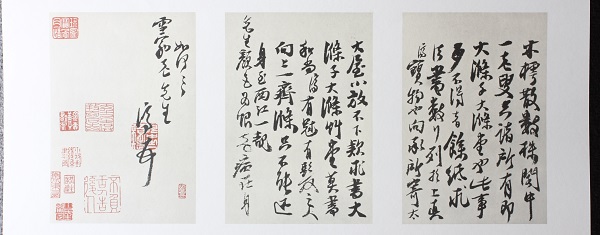
Shi Tao calligraphy

Shi Tao's self-written "Quotes on Painting"
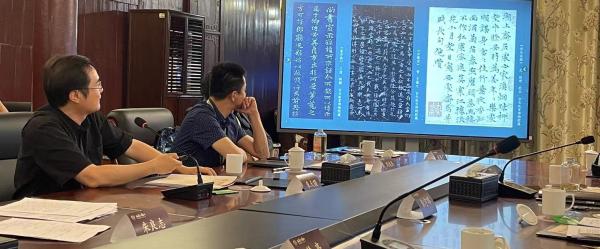
Zhu Tianshu, professor at Beijing Language and Culture University, researcher at Peking University Aesthetics and Aesthetic Education Research Center, and doctoral supervisor, gave a speech on "Reading Notes on Shi Tao's Calligraphy from the Forbidden City Collection". He believed that not only his paintings and stacked stones, but also Shi Tao's calligraphy creations had a great influence on later generations. Shi Tao's calligraphy was integrated with poetry and painting, and his creative concept of integrating poetry, calligraphy and painting had a great influence on the later "Eight Eccentrics of Yangzhou" Jin Nong and Zheng Banqiao. The profound influence has been inherited and exerted. Zheng Banqiao's "six and a half calligraphy" is a mixture of seal script, running calligraphy and regular script, with varying sizes. The technique of this change comes from Shi Tao. Jin Nong's writing of "Huashan Stele" is actually in the same vein as Shi Tao's official writing method.
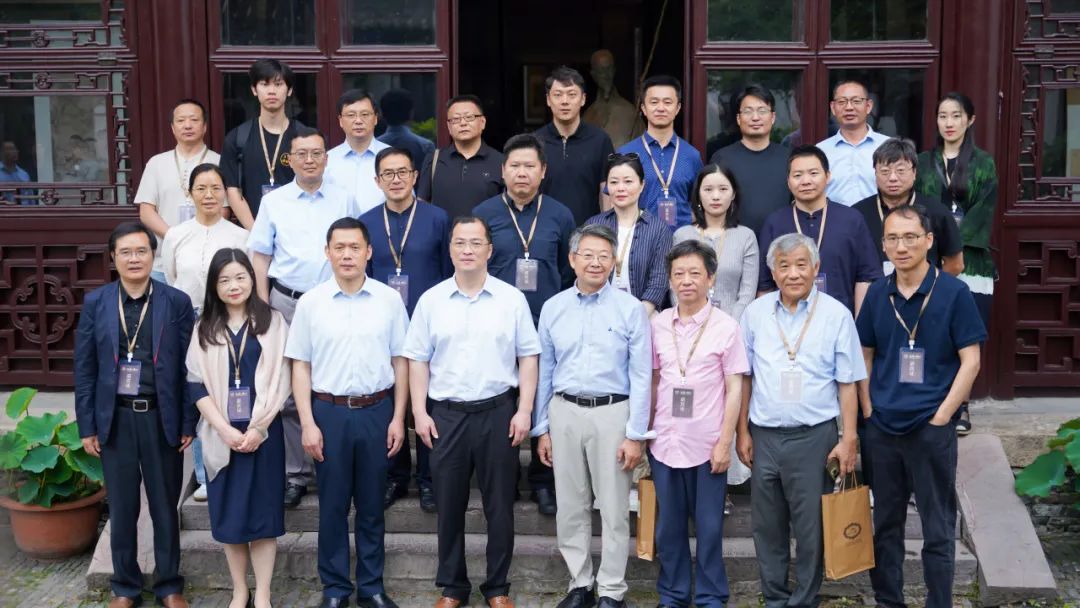
A group photo of participants of the "Shi Tao and Yangzhou" academic symposium at the Shi Tao Memorial Hall in Heyuan, Yangzhou
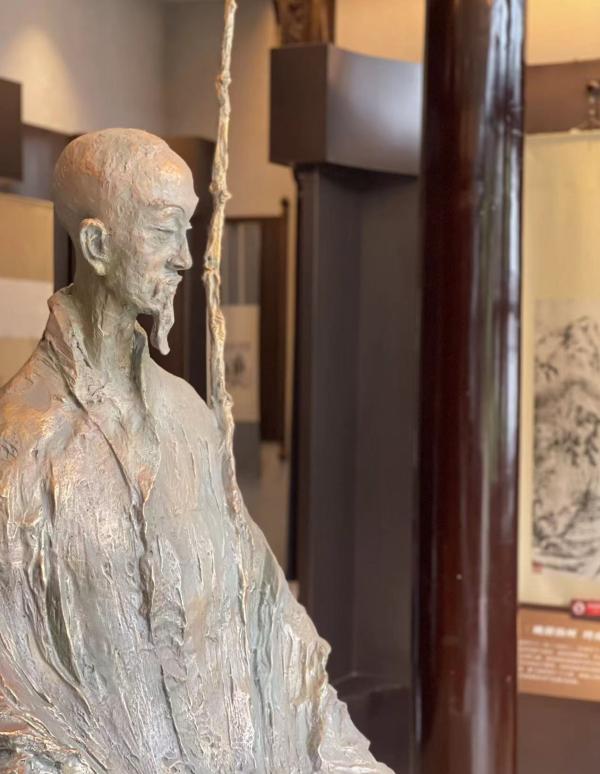
Yangzhou Heyuan Shi Tao Memorial Hall, Shi Tao sculpture
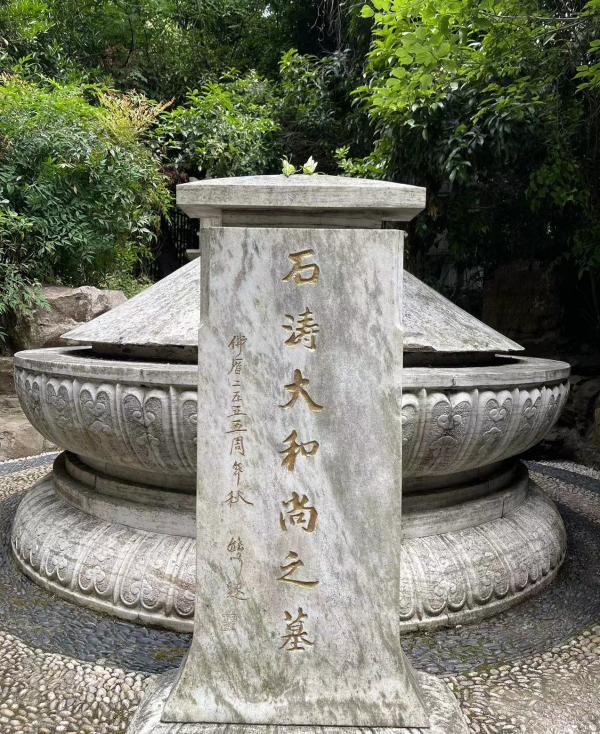
Shi Tao's Tomb in Daming Temple, Yangzhou
Zhu Liangzhi, professor and director of the Research Center for Aesthetics and Aesthetic Education at Peking University, summarized the meeting. He believed that this seminar was well prepared and had diverse research angles. It was very exciting and has great significance in the history of Shi Tao research. “In recent years, a series of publications have been published. After studying Shi Tao's book, I originally wanted to stop studying Shi Tao. The speech at this conference gave me a lot of inspiration. It can be said that Shi Tao is a huge treasure house, and I still have to continue my research on Shi Tao. "
Before and after the symposium, the participating scholars also visited the stone mountain house in He Garden and Shi Tao Memorial Hall. Some scholars made a special trip to visit the ruins of Shi Tao's Dadi Cottage next to Dadongmen in Yangzhou, and paid a visit to Shi Tao's tomb in Daming Temple.
